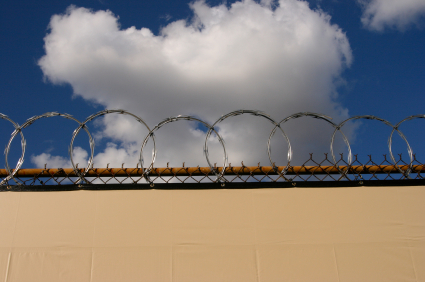|
|
| Corrections Challenges |
| By Terry Campbell, Professor, Purdue University Global |
| Published: 10/04/2024 |

Unfortunately, the field of corrections is facing a lack of staff. This has been an ongoing problem in many states. Recruitment and retention are difficult. Also, we must consider the severe security breaches that result from this. The correctional officer’s job is dangerous and stressful, often exacerbated by inadequate staffing. When I mention correctional officers, I must include uniform and non-uniform personnel. Many corrections agencies have implemented initiatives to fill vacant positions. Corrections deals with offenders who will do what’s necessary to survive. We know you do not learn to be an effective corrections officer overnight. Vacant positions also equate to an additional loss of corrections experience. I am sure all of us have experienced, at one time or another, a staff shortage. Unfortunately, this leads to some staff having to complete their assignments as well as those of absentees. Talk about additional stress. We know there are many other daily challenges in corrections. The overall safety and security may be jeopardized due to the following factors: lack of staff, overcrowding in many cases, inmate and staff behavior, the security level of the institution, staff burnout, inability to meet training requirements, lack of support, increased incidents, including use of force, abuse of sick time, adhering to emergency plans, and others. As you can see, many of our prisons are operating at dangerous levels. The administration knows this and cannot wave a magic wand and make it disappear. Efforts have been attempted to improve retention and recruitment, often without positive results. Corrections must be proactive, not reactive. We know the staffing problems and concerns, yet we wait until deficient staffing occurs. This must be a 365-day proposition. We must take corrective action immediately. Yes, I am aware of budget restraints and the politics involved. However, we take risks when these challenges occur, and our response is limited. We must have an action plan in place. Prisons can be volatile, and we are witnessing an increase in incidents involving jails and prison staff. In other articles I published, I addressed some of these same and similar concern areas. I will address something I have observed during lean times and when we were sufficiently staffed. All too often, we become complacent with new updating policies and emergency procedures. We are motivated to have these procedures in place and additional training. This sounds good until we are honest and do an assessment and find several months later that these procedures are not being utilized and are sitting on a shelf collecting dust. The ongoing vicious cycle. Unfortunately, serious incidents occur and we look at quick fixes. All too often we are missing the bigger picture. I do not mean this is a reflection on corrections as a whole, but it is occurring more frequently in many of our correctional systems. There are no secrets in our prisons. Offenders, as well as officers, have a good idea of what current prisons face. They also are aware of our news outlets. We can no longer expect severe incidents to occur only in higher security-level prisons. This is seen by many incidents increasing at lower security level facilities. Not only are our staff facing additional stress and security concerns, but also our offender population as well. There are no easy solutions and tough decisions must be made. I also feel we need to consider the impact on offender programs. As discussed earlier, we face funding concerns. Careful considerations must be looked at when deciding on any program and security reductions. The bottom line is that many of our prisons have become more dangerous. Failure to protect comes to mind, as well as other areas of concern. Prisons and jails are not going anywhere soon. We can review crime rates and see an increase. We need to look at, once again, who is going to prison and why we are still witnessing increases in recidivism. Have we exhausted all attempts at alternative sentencing, or can we become more creative? Yes, if we consider alternatives, we still experience resource issues and concerns. However, we cannot afford to continue building prisons and are unable to adequately fund these prisons. Are we back to ‘lock them up and throw away the key?’ Corrections has made many significant strides, yet needs additional solutions. I feel we would be remiss if the ethical component is not discussed. Many news articles and other media outlets are published across the country and our staff’s involvement in trafficking and trading with the inmates. This is not a new phenomenon. Administration can be very creative in identifying and controlling for this. However, this must not be ignored. We already have ample safety and security concerns. These are additional challenges and dilemmas staff must deal with. Who can you trust? We can decide to put forth a concentrated effort to ease this dilemma or continue to be part of the problem. Let’s get back to being proactive and not reactive. At the conclusion of our shift, we want to go home and not become a statistic. Please share thoughts and initiatives your agency has implemented. After all, we are a team. What better way to collaborate and assist each other? Best regards, and stay safe out there. Terry Terry Campbell is a criminal justice professor at Purdue University Global and has more than 20 years of experience in corrections and policing. He has served in various roles, including prison warden and parole administrator, for the Arkansas Department of Corrections. Terry may be reached at tcampbell@purdueglobal.edu. Other articles by Campbell |
MARKETPLACE search vendors | advanced search

IN CASE YOU MISSED IT
|


Comments:
No comments have been posted for this article.
Login to let us know what you think